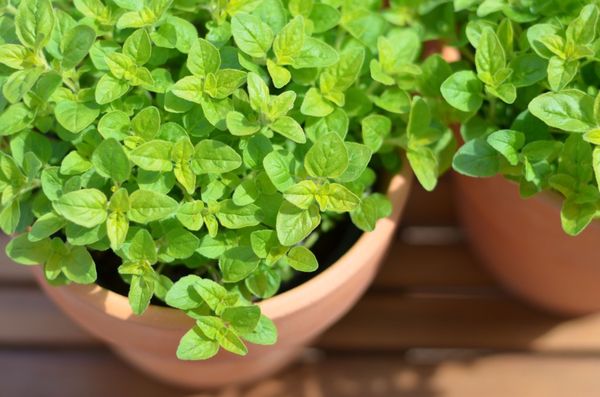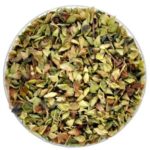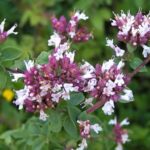Growing marjoram from seeds is also possible in vegetable gardens as an ornamental, spicy, and medicinal plant. Because of its flavor, it is used in cooking in many countries of the world.
Table of contents
What is marjoram
Marjoram is a perennial plant of the genus Oregano family Cluster. In many regions, grown as an annual crop, as it heat-loving and does not tolerate severe frosts.
The plant is not high, grows up to half a meter. The erect stem has a silver color with gray-felt leaves. Spike inflorescences are painted in pink, white or reddish color. Flowering occurs in July, August.
There are two types of marjoram: leaf and floral.
- Leaf - the bush has a branched stem with dense greens. There are few flowers on the plant.
- Flower appearance - has not as strong stems and roots, as in deciduous species. But even though it is called floral, it has few flowers.
- Fruits of marjoram
- Flowers
History of origin
Homeland is considered the Middle East, Central Europe and North Africa. The ancient Greeks considered marjoram as a magical flower. They thought he was returning love and betraying courage. The Romans considered him to be the strongest aphrodisiac.
In our time, the plant found use in cooking and traditional medicine.
Growing marjoram in the garden
Grow it in a garden plot, not an easy task. Since culture very demanding to care.
Soil requirements:
- Soil should be fertile and easyprepared from autumn. Garden beds are made in a sunny place, protected from drafts.
- After choosing a place, the soil must be fertilized. On the nutrient soil plant will appreciate the rapid growth. To this end, before the planting, mineral fertilizers are applied to the soil: potassium salt, superphosphate, urea. The dosage is determined after studying the instructions for use.
Sowing time for seedlings
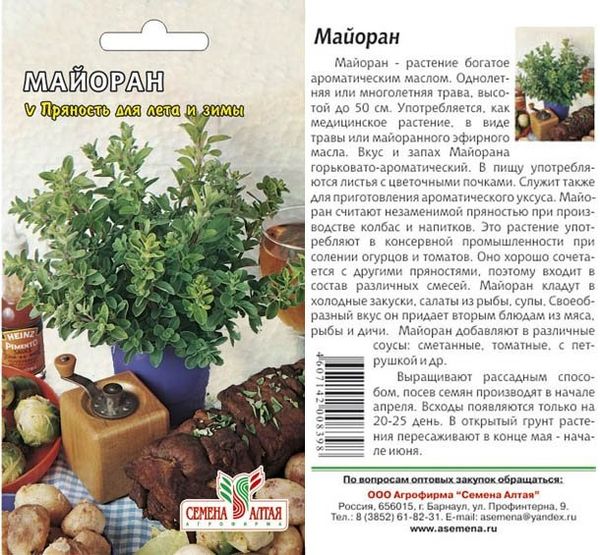
Planting seeds on seedlings begins in April month To do this, you must purchase seed from reliable manufacturers.
Seeds are sown in nutrient soil, superficially. The seed container is covered with glass or plastic film and stored in a warm place for germination. For good germination, the temperature in the micro-pot should be +22 degrees.
Seed germination occurs on the 20th day after planting. In order to grow, you must be confident in your abilities and know all the details of growing.
Care of seedlings
As soon as the seeds hatch and the first leaves appear, the film is removed, the sprouts dive and placed in a warm greenhouse scheme 5x5.
Two weeks before planting in open ground, seedlings quenched. To do this, the air temperature is lowered daily, until the seedlings are used to the open air. The optimum temperature for good growth: in the daytime +20 degrees, at night +16 degrees.
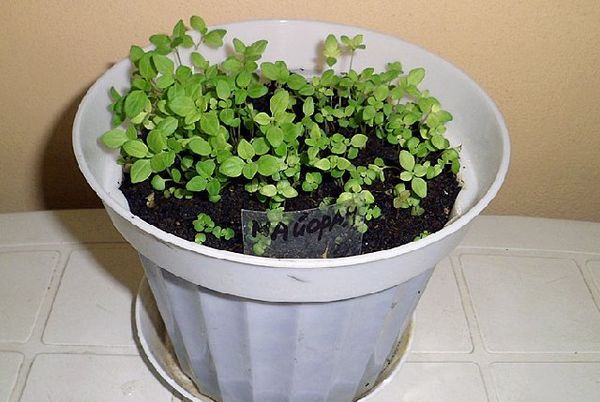
Planting seedlings in open ground
After the seedlings got stronger, and the spring frosts receded and the land warmed up, the marjoram is planted in a permanent place.
Beds do in a sunny, windproof place. Seedlings are planted in a nutritious, moist soil in rows. Distance between rows - 40 cm, and between the bushes - 20 cm.
The seedlings are planted in well-spilled soil, a handful of compost mixed with soil is added to each well, a seedling is planted with a clod of earth, the soil is tamped and moistened.
Seedlings fully rooted in 14 days. In the first days after planting, the plant must be sheltered from direct sunlight and carried out constant watering. After the seedlings have taken root, watering is combined once every 10 days with bait: 15 grams of saltpeter per bucket of water.This amount is enough for 1Q. meter.
Grows well on loamy or sandy soilsas it is well heated by the sun. Marjoram grows best in garden beds, where they used to grow potatoes.
Care rules
Care for marjoram:
- Watering
- Loosening and removing weeds
- Top dressing
- Disease prevention
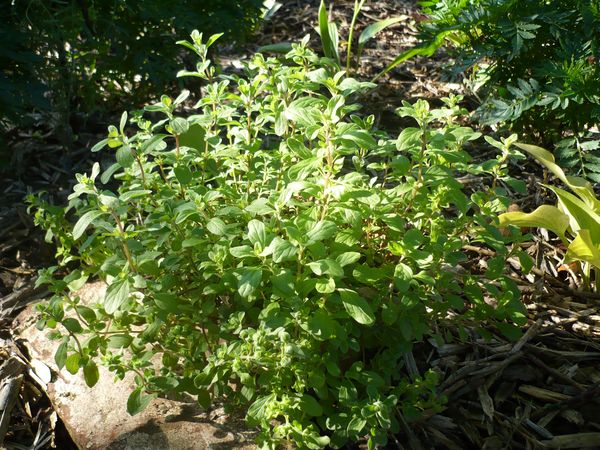
Plant care should be the maximum, it will not give rich greenery, if it does not receive due attention.
Watering and loosening
Marjoram - a plant moisture-loving and drought-resistant. Watering is done in the morning or evening with warm water. Until mid-summer, they conduct regular watering, during flowering and fruit formation, watering is reduced and carried out after the tog how the earthy crust is formed.
Loosening of the land is necessary after each irrigation. Timely removal of weeds, is a good prevention of many diseases.
Top dressing
Plant is fed up 21 days after disembarkation to a permanent place. To do this, use complex fertilizers: 10 grams of potassium salt and urea, 20 grams of superphosphate is diluted in a bucket of water. 10 liters of solution is enough for a strait of 1Q. meter
Disease prevention
Young plants are often exposed Alternaria. To prevent this from happening, the plants are treated with fungicides.
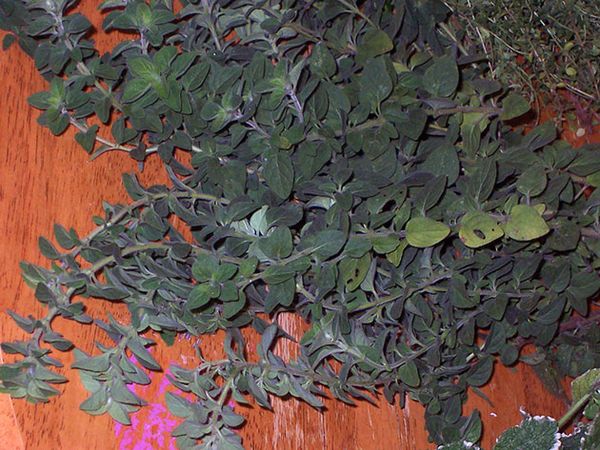
Also on the marjoram can live larvae. mahranian moth. You can get rid of them by treating the soil and the plant with insecticides.
Harvesting and Storage
Harvesting is carried out twice per season:
- In summer, only leaflets are cut off.
- In the fall, remove the whole plant. It can be harvested for the winter.
The first - in the middle of summer, the second - in the beginning of autumn.
Marjoram can be dried in several ways:
- Plants bundled and hung in a ventilated shade. It can be an attic or a place under a shed.
- Plants laid out on a horizontal surface laid out by the newspaper.
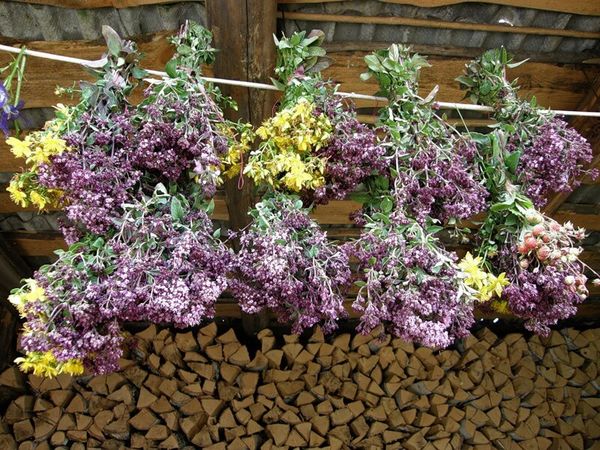
Marjoram can not be dried in the open sun, as the sun's rays lead to loss of essential oil. Dried marjoram is sorted, to identify damaged and yellowed leaves.
Healthy, dried herbs are ground into powder, packed in dry cans and cleaned in a dry, dark place.
If you know all the agrotechnical subtleties, marjoram will give your favorite dishes an unforgettable touch of taste and aroma. It will also help with many diseases.
